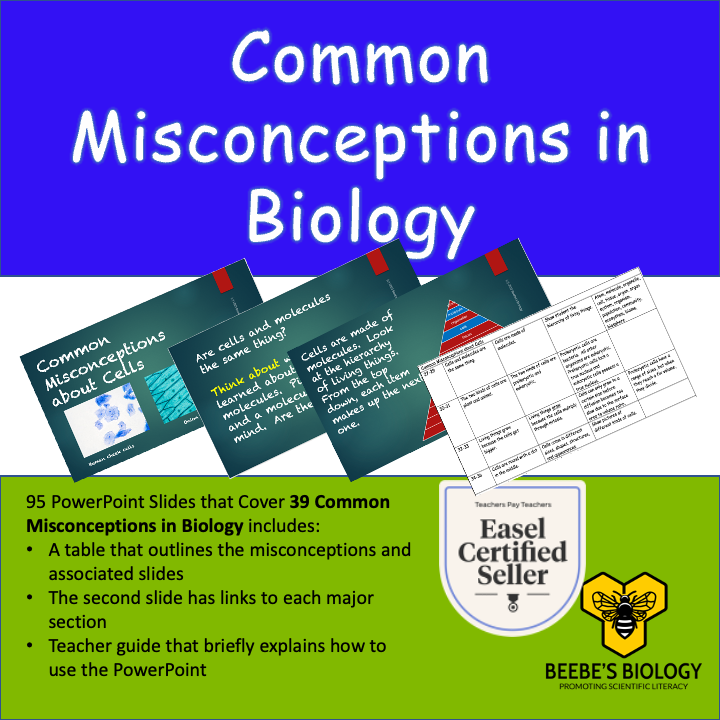Addressing Misconceptions in Biology
- beebesbiology
- Dec 10, 2023
- 3 min read

Misconceptions exist in all areas of knowledge: arts and culture, science, technology, mathematics, history, religion, etc. For example, have you heard touching a baby bird will cause the mother to reject it? Birds have a poor sense of smell. It is not the touching of the bird; it is disturbance around the nest that may cause bird parents to abandon it. The Cornell lab says it’s perfectly safe to pick up a fallen nestling and put it back into the nest or in a nearby shrub.
Students come to us with misconceptions. Misconceptions can be categorized as follows:
· Preconceived notions – popular conceptions rooted in everyday experiences
· Nonscientific beliefs – views learned by students from sources other than scientific education, such as religious or mythical teachings
· Conceptual misunderstandings – arise when students are taught scientific information in a way that does not provoke them to confront paradoxes and conflicts resulting from their own preconceived notions and nonscientific beliefs
· Vernacular misconceptions – arise from the use of words that mean one thing in everyday life and another in scientific context
Paraphrased from: https://nap.nationalacademies.org/read/5287/chapter/5
It is important to directly address misconceptions because everyday types of tasks in the science classroom may allow the misconceptions to be retained and interfere with a complete understanding of concepts. It is possible for misconceptions to coexist with correct knowledge. I knew a high school biology teacher who believed that blood was blue in veins and red in arteries! It came up in discussion one day during lunch. She was very surprised that she had never learned otherwise.
It is important when discovering and correcting misconceptions that students are not made to feel embarrassed. As stated above, all of us have misconceptions, and it can be surprising and embarrassing when we are confronted over them.
So, what is the best strategy to discover and teach misconceptions?
· Identify the misconception. This can be done by asking the students probing questions during a lesson or lab. Please check out my new PowerPoint below. (NOTE: It is very important that teachers realize that these slides are meant to be used in the context of the lessons. I have covered 39 common misconceptions in Biology, but they are not to be discussed all at one time. Instead, I would recommend using applicable slides per unit in the context of introducing the unit or lesson where the misconception might appear.)
· Create an environment whereby the students themselves confront their misconceptions. The slides in the PowerPoint have probing questions and then a prompt to think about the answer to the question. The teacher could allow students to debate, discuss and compare ideas. Listening to the students do this will help the teacher further unpack these misconceptions and address them fully.
· Present models, pictures, and videos that demonstrate the correction to the misconception. The slides in the PowerPoint that follow the question/prompts correct the misconceptions and invite students to think for themselves (either directly or implied). For example: Some students may believe that male and female skeletons have different numbers of ribs. Show them the pictures of skeletons in the PowerPoint and encourage them to count the ribs.
· If applicable, use a demonstration, mini-lab or full lab to allow students to test the misconception.
The teacher should provide multiple opportunities for students to demonstrate understanding/correction of the misconception. Like all learning, repetition is key. It would be helpful to do this during the introduction, daily work, labs and on the test for the unit/chapter.
I hope this blog will encourage you to address misconceptions in your Biology classroom. Doing so, can save you reteaching time and increase learning in your student population. Please check out my new resource…it will provide help in working this into your lessons. Happy Teaching! -Jane
Click image to view on TPT
These pictures show a sample of slides into the PowerPoint





Comments